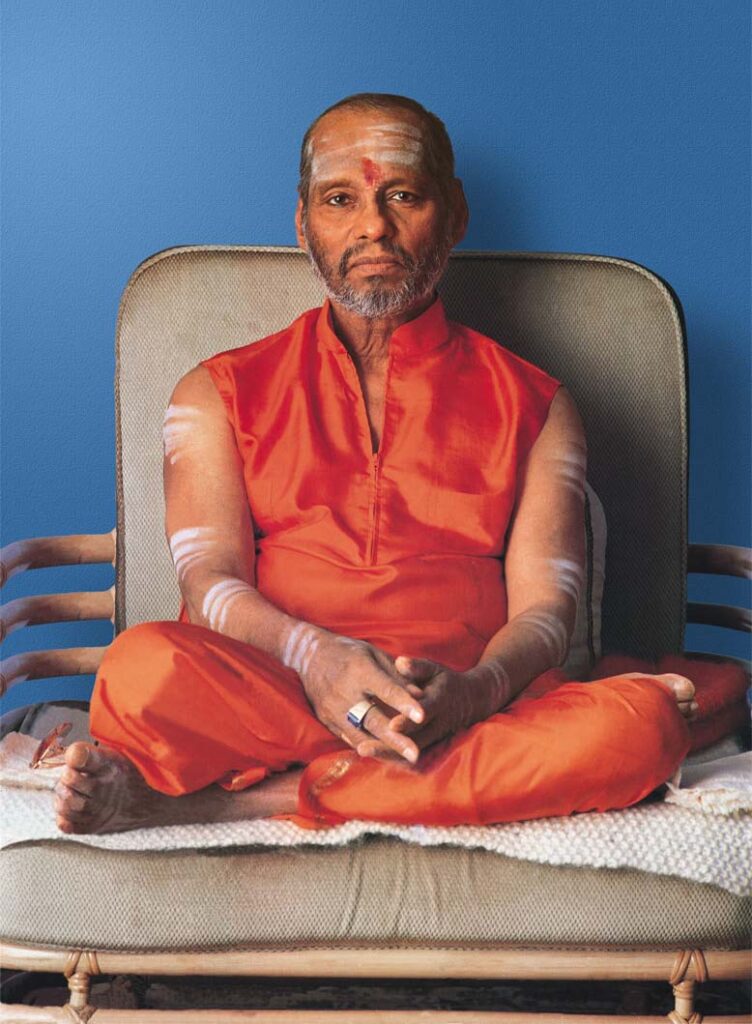TEACHINGS FROM SWAMI MUKTANANDA
Words: Victor Parachin

It’s not often that a teenage boy encounters a sage and immediately experiences a powerful surge of awareness, so much that the 15 year-old decides to leave home wandering all over his country in search of spiritual Truth. Yet, this is precisely what took place in the life of 15 year old Krishna Rau upon meeting Hindu ascetic Bhagavan Nityananda. That boy would emerge as one of India’s leading spiritual teachers and often described as a “guru’s guru”. Krishna Rau was born on May 16, 1908 into a prosperous middle class Indian family living near the South Indian city of Mangalore. As a very young child he was fascinated by stories about India’s sages and saints. In this way, he was temperamentally prepared to meet and respond to spiritual teachings. Departing from his family and home, Rau made his way to an Ashram where, after a few months, he received initiation as a sannyasin, a wandering ascetic monk. He took the name Swami Muktananda which means “the bliss of liberation.” Over the next 30 years he traveled all over India, mostly by foot, in search of his teacher, one who could lead him to a direct experience of Truth. In the process, he learned from more than sixty teachers and became proficient in hatha yoga, ayurveda, and meditation.
Siddha Yoga tradition, teaches and aspires to help “everyone, everywhere, to realise the presence of divinity in themselves and creation, the cessation of all miseries and suffering, and the attainment of supreme bliss.”
It was only when he re-connected with Bhagavan Nityananada whom he first met as a 15 year-old that Muktananda realised this man was the teacher he was seeking. From Nityananda, he accepted initiation into the Siddha Yoga tradition, one which teaches and aspires to help “everyone, everywhere, to realise the presence of divinity in themselves and creation, the cessation of all miseries and suffering, and the attainment of supreme bliss.” Following this initiation, Muktananda spent the next 9 years in intensive meditation practices and emerged from this time of retreat ready to offer instruction and guidance to others. As more and more came to study with him, Muktananda – affectionately called Baba by devotees – established an Ashram near the village of Ganeshpuri in the Indian state of Maharashtra. With word of his teachings and compassionate presence spreading, students began arriving at the Ashram from all over the world: Americans, Canadians, Australians, and Japanese. He came to be affectionately known as “Baba” to his friends and devotees. The fundamental teachings of Siddha Yoga presented by Muktananda were very simple but powerful. Again and again, Swami Muktananda would tell people, “Meditate on your Self. God dwells within you as you,” and, as a natural expression of the experience of inner divinity, “see God in each other.” Consistently, he reminded people to see the Truth which exists within the inner Self. “Man goes to great trouble to acquire knowledge of the material world. He learns all branches of mundane science. He explores the earth and even travels to the moon but he never tries to find out what exists within himself,” he said. Unaware of the “enormous power” humans have within, they look for love and happiness in all the wrong places. “The truth is that the inner Self of every human being is supremely great and supremely lovable,” he taught. When teaching meditation, Muktananda directed individuals to do Hamsa meditation saying “the specialty of Hamsa is that it works for anyone. It can be practiced very easily and naturally by young people or old people, by people of every county and every religion.
You can practice it while living an ordinary life in the world.” This meditation uses the sound of breath entering and exiting and is done this way: Upon inhaling, one says “hum”; upon exhaling one says “sa”. Though short and simple, it is an ancient and powerful meditation technique when practiced regularly. Muktananda taught primarily in India but made several international teaching tours. He also authored books including ‘I Am That: The Science of Hamsa and Play of Consciousness’. A diabetic, he suffered from complications of the disease including a major stroke and heart attack which required lengthy hospitalization. With his cardiovascular health continually deteriorating, he had a final heart attack and died on October 02, 1982. Following his death, several accusations of sexual impropriety were made causing divisions and doubts among followers. As he could not defend himself to accusations – primarily anonymous – made after his death, leaders of Siddha Yoga maintained that Muktananda was a highly evolved spiritual master but not a perfect one.
Victor M. Parachin, M. Div. (CYT) is an author, Vedic educator, yoga instructor, and Buddhist meditation teacher. He is the director of Tulsa Yoga Meditation Centre (USA). Victor researches and writes extensively about eastern spiritual philosophy and is the author of numerous books. His work is published regularly in YOGA Magazine. His book – ‘Think Like a Buddha: 108 Days of Mindfulness’ was published by Hohm Publishers and his latest book ‘Buddhist Wisdom for Beginners: An A-Z Guide’ is published by Sunstone Press.
tulsayogameditationcenter.com